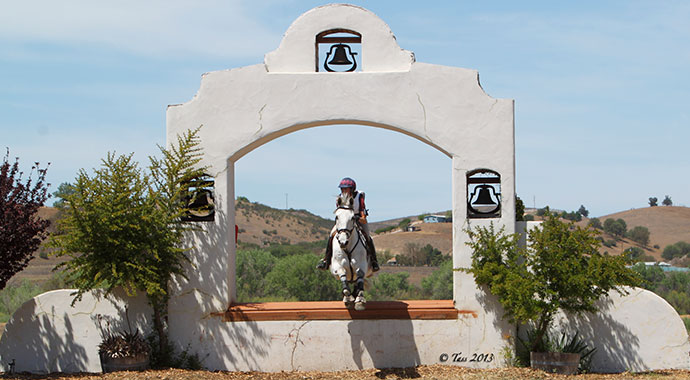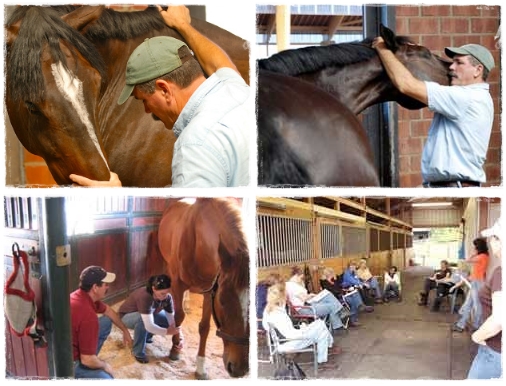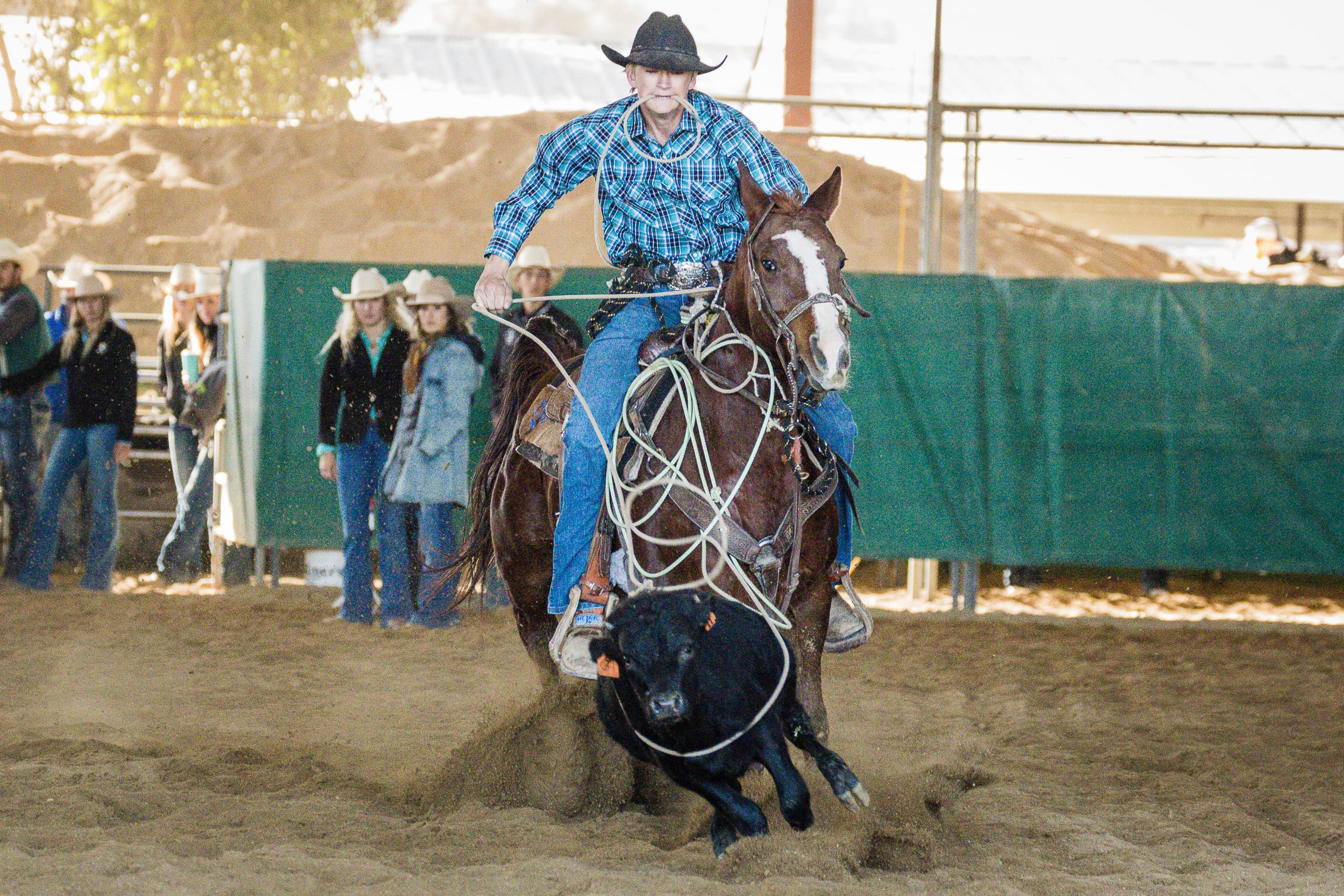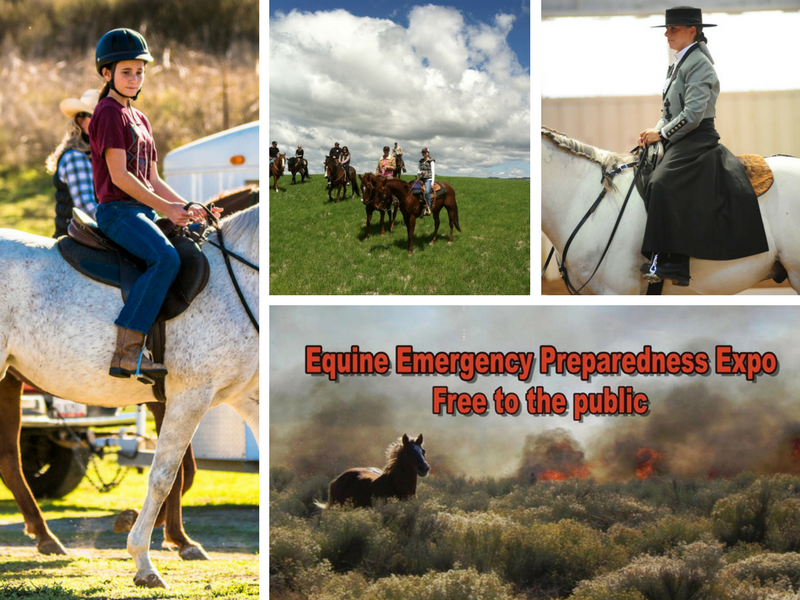When is standing for hours in the wind and sun, carrying a walkie-talkie, and getting dirt on your teeth an adventure? When jump judging at a Twin Rivers! “Jump Judge.” Sounds impressive, huh? Sometimes I even see a glimmer of admiration in someone’s eyes until I quickly explain that it’s not as official as it sounds. It’s just an amazing volunteer score-keeping opportunity to help make sure the horses and riders clear their jumps while thundering over wild terrain at blazing top speed.
Nevertheless; it is an important volunteer job and the cross-country classes at three-day facilities like Twin Rivers Ranch would be in a pickle without those of us who enjoy spending our days in the wind, sun, and dust–sitting and waiting for the next horse and rider team to gallop past and over the jump, coating our faces and teeth with another layer of dust!
Every jump judge has their favorite aspect. My favorite is watching the Beginner Novice division with the seasoned horse that knows exactly how to take care of his anxious rider. It is amazing watching those school-master horses teach their riders that the course is safe and the only thing the rider needs do is sit tight! As the horse comes galloping up, you can see his ears pointing forward, knowing exactly how many strides to the fence, knowing when to tuck his hindquarters and pick that sweet spot in perfect cadence! You can almost hear the horse saying to his rider, “You’re okay. Sit tight! I got this!” These horses are amazing teachers as well as finely trained athletes.
When asked what she considers the most “gnarly” obstacles at Twin Rivers Ranch, Connie Baxter thinks the water complexes are the most exciting. She dismissed “gnarly.” Guess the term is more appropriate to surfing mammoth waves than to roaring full speed on horseback across 500 acres of hills, ditches and other obstacles! Or is it?

Martha Wilson, who helps coordinate jump judges for events at Twin Rivers is a fan of the advanced riding teams. She talked about how the advanced courses with those huge, often complex, rock-solid obstacles, up to 4’ 7”, require phenomenal training, conditioning, trust and communication between horse and rider. The obstacles can be anything from a single jump to those complicated by water, a wide spread, or a combination of fences or other obstacles. It takes extreme physical conditioning for both horse and rider and deep trust and partnership to approach these courses at speed and know when to adjust their speed and balance for a clear ride.
Martha is the friendly voice at the other end of the phone call letting us know when an event is coming up and asking for our time as volunteers. She’s been lining up volunteer jump judges since 2005, calling hundreds of people over the years as well as organizing youth groups, such as 4-H clubs to volunteer.
For those who are not familiar with three-day eventing, sometimes called horse trials or combined training, it an equestrian sport which involves riding your horse on the flat and over fences in three phases. Those phases are dressage, cross-country jumping, and stadium jumping. Sometimes, in one-day schooling shows, or over three days; hence the phrase three-day!
Horses and rider teams are classified into divisions starting with Beginner Novice and acquire points that move them up through the divisions. For some teams, this means years of competing as a team and reaching the International level and maybe even the Olympics.
A History of Tradition
According to the United States Eventing Association’s (USEA), “Discover Eventing” website, modern day horse trials are inherited from a military tradition of testing horses for their fitness on the battlefield. The cross-country phase tested the horse’s stamina and courage over a variety of terrain and stadium jumping demonstrated soundness and fitness after cross-country. The elegance of dressage showed off the horse and the communication between horse and rider on the parade ground.
Eventing as it is today evolved from a 1902 French competition. The first occurrence of eventing in the Olympics was in 1912. The year 1949 saw the first civilian three-day event in the U.S. in conjunction with the Bryn Mawr Horse Show. In 1953 a movement towards the Olympic three-day formula started bringing us to today with the U.S. being a consistently major competitor in global equestrian events.

For more information and history, check out the USEA website is: http://www.useventing.com, and the Discover Eventing website is: http://www.discovereventing.com.
Our Own Central Coast Eventing Center: Twin Rivers Horse Park
In the heart of the Paso Robles wine country Twin Rivers Horse Park is a premier eventing facility, hosting at least three events per year that are on the USEA circuit. The USEA events are those from which horse and rider teams accumulate scores that allow them to move up through the divisions. It’s a very busy facility, hosting as many as four different kinds of shows per month.
Among the regular one-day schooling shows and three-day events, Twin Rivers hosts competitions for driving and hunter/jumpers, as well as three-day practice and training activities. Twin Rivers can accommodate more than 400 horses, depending on the number of entries in any particular show. One-day shows may accommodate 50 to 100 horses and during a USEA sanctioned event, more than 400.
The Baxter family has operated Twin Rivers since 2001 with the goal to become the fun destination for horses, riders, and enthusiasts to ride and enjoy. If you don’t like dirt on your teeth, Twin Rivers has other volunteer opportunities for dressage scribes and stadium jumping ring stewards, time keepers, and other tasks crucial for running a successful event.
Interested in volunteering? You can sign up on the Twin Rivers Ranch website: http://twinrivershorsepark.com, or contact them through their website. Twin Rivers feeds its volunteers and gifts volunteers with vouchers that are good for riding time at the facility. Don’t need riding time at Twin Rivers? Gift your voucher to your local youth riding group!




